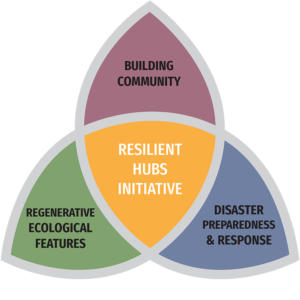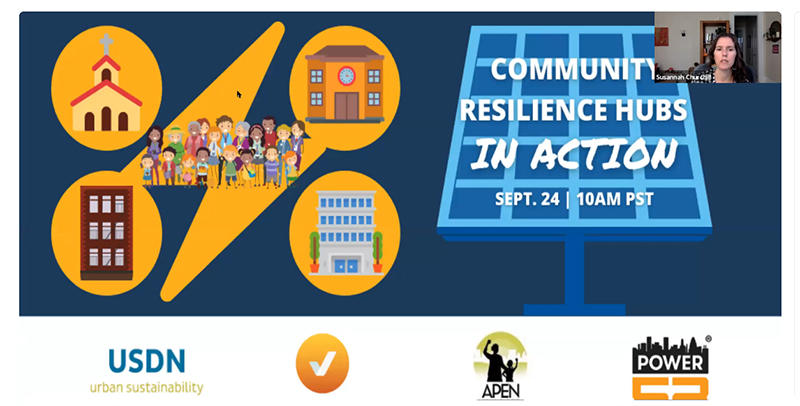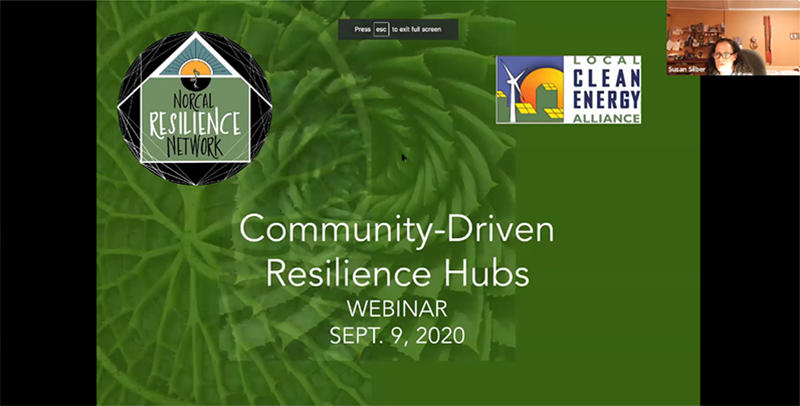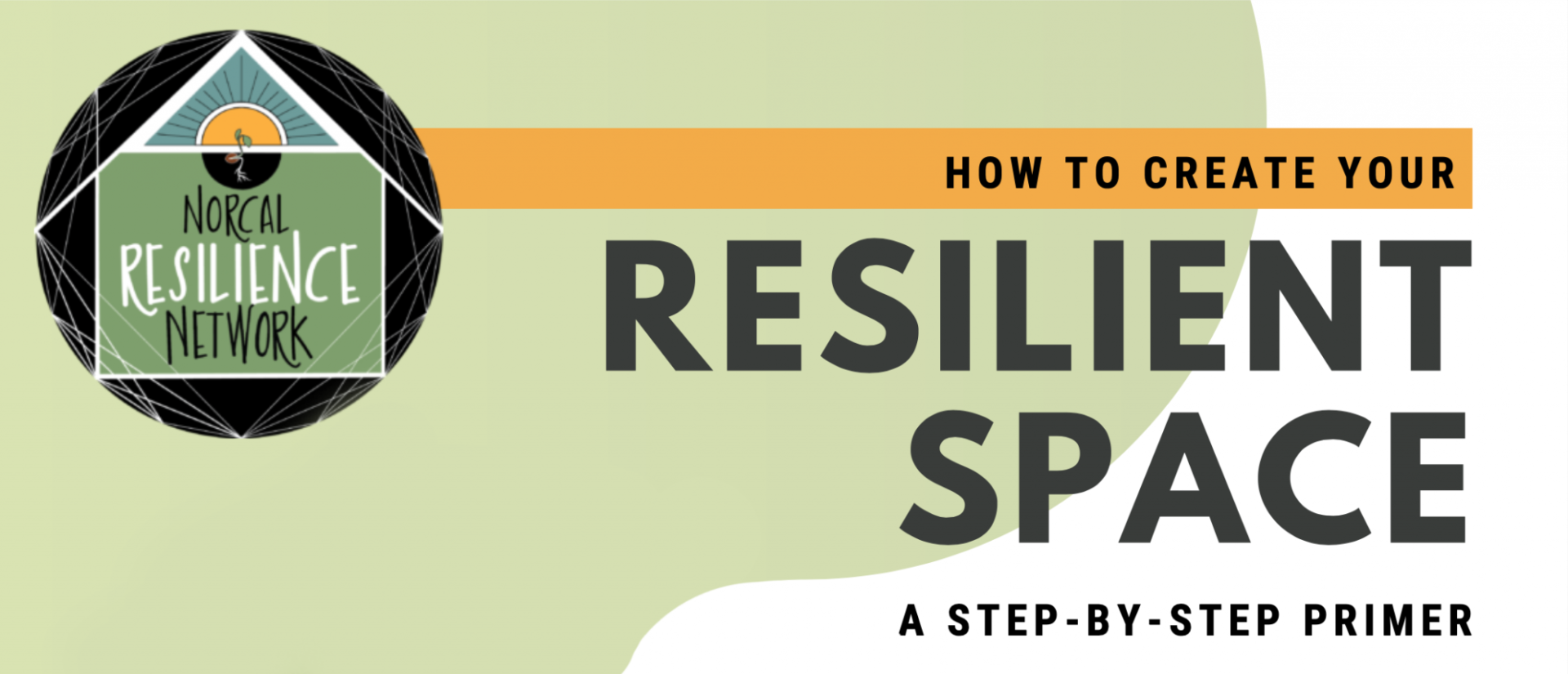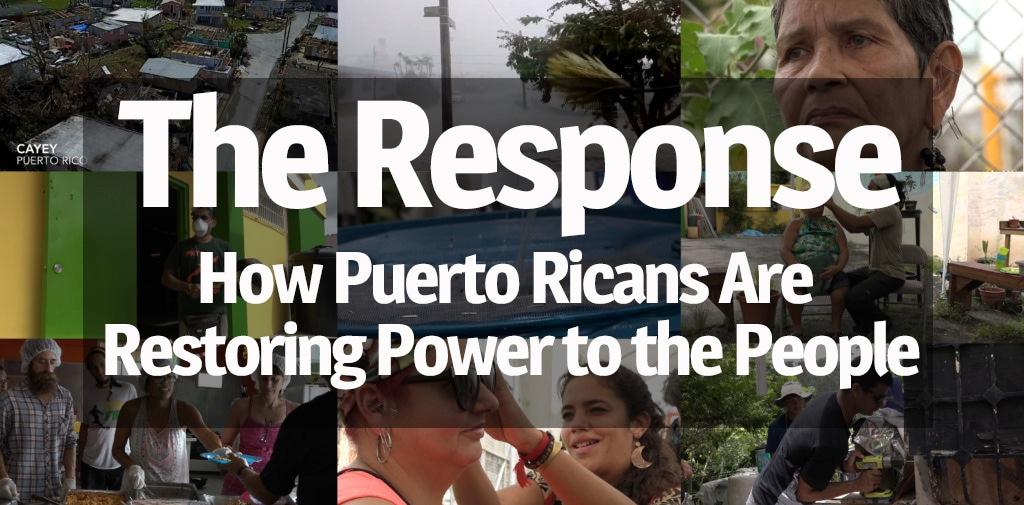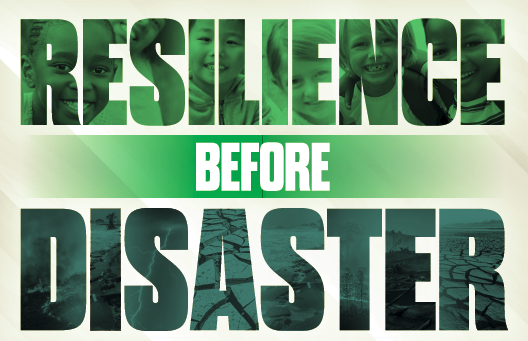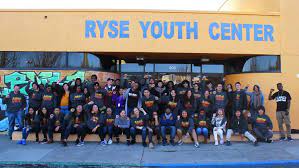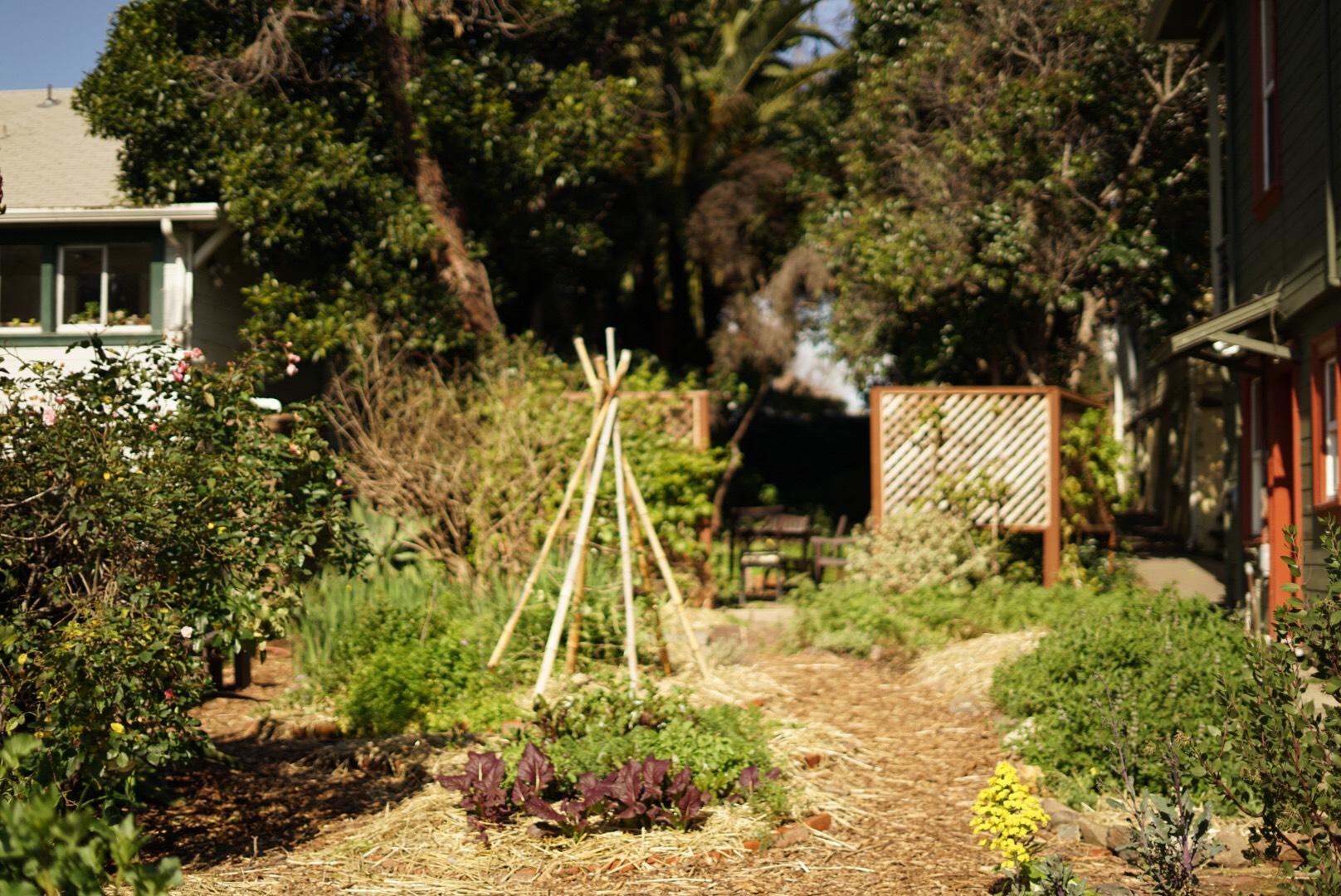
Resilience Hubs Initiative
READY FOR ANYTHING
The vision of the Resilience Hubs Initiative is to create a network of community centers, neighborhoods, places of worship and other trusted community sites that are models for resilience and “ready for anything” – better prepared for natural disasters, climate change and other stresses in our community.
Make a
Donation
Leadership Training Program
ABOUT THE RESILIENCE HUBS INITIATIVE
In this increasingly chaotic world of never-ending and disasters, we must be “ready for anything”. Resilience hubs are some of the most promising and equitable approaches to scaling up local resilience.
The Resilience Hubs Initiative was created in response to the urgent need to build resilience in our homes and communities in the wake of the Climate Crisis and social injustice. From recreation centers to housing complexes, resilience hubs are trusted community centers and spaces that serve as a gathering place to distribute resources, exchange information, and express community care during disasters; while supporting community programming and permaculture-inspired climate solutions year-round.
The resilience hubs model shifts the power to neighborhoods and residents, while prioritizing their development in Black, Indigenous and People of Color communities affected first and worst due to history of marginalization and disinvestment. Resilience Hubs and spaces support a trauma-induced response, are centered in equity and community care, and rooted in three pillars:
Programming and projects to build community
Climate solutions, with a focus on low-tech and regenerative ecological infrastructure
Disaster preparedness and response
OUR COMMITMENT TO FRONTLINE COMMUNITIES
Hubs shift power to neighborhoods and residents, supporting them to meet their own needs and practice self-determination. To combat centuries of disenfranchisement, marginalization and disinvestment, the Resilience Hubs Initiative prioritizes resources and support for projects led by people who have been racialized as Black, Indigenous and People of Color.
As the Greenlining Institute notes, “Climate disasters exacerbate the injustices that low-income, disadvantaged populations face, often leaving these communities with worse health impacts, increased food and job insecurity, and higher rates of poverty compared to wealthier communities.”
The NorCal Resilience Network is committed to prioritizing frontline communities in every aspect of our program, from providing funding to sharing stories and uplifting the voices of the inspirational leaders leading these efforts.
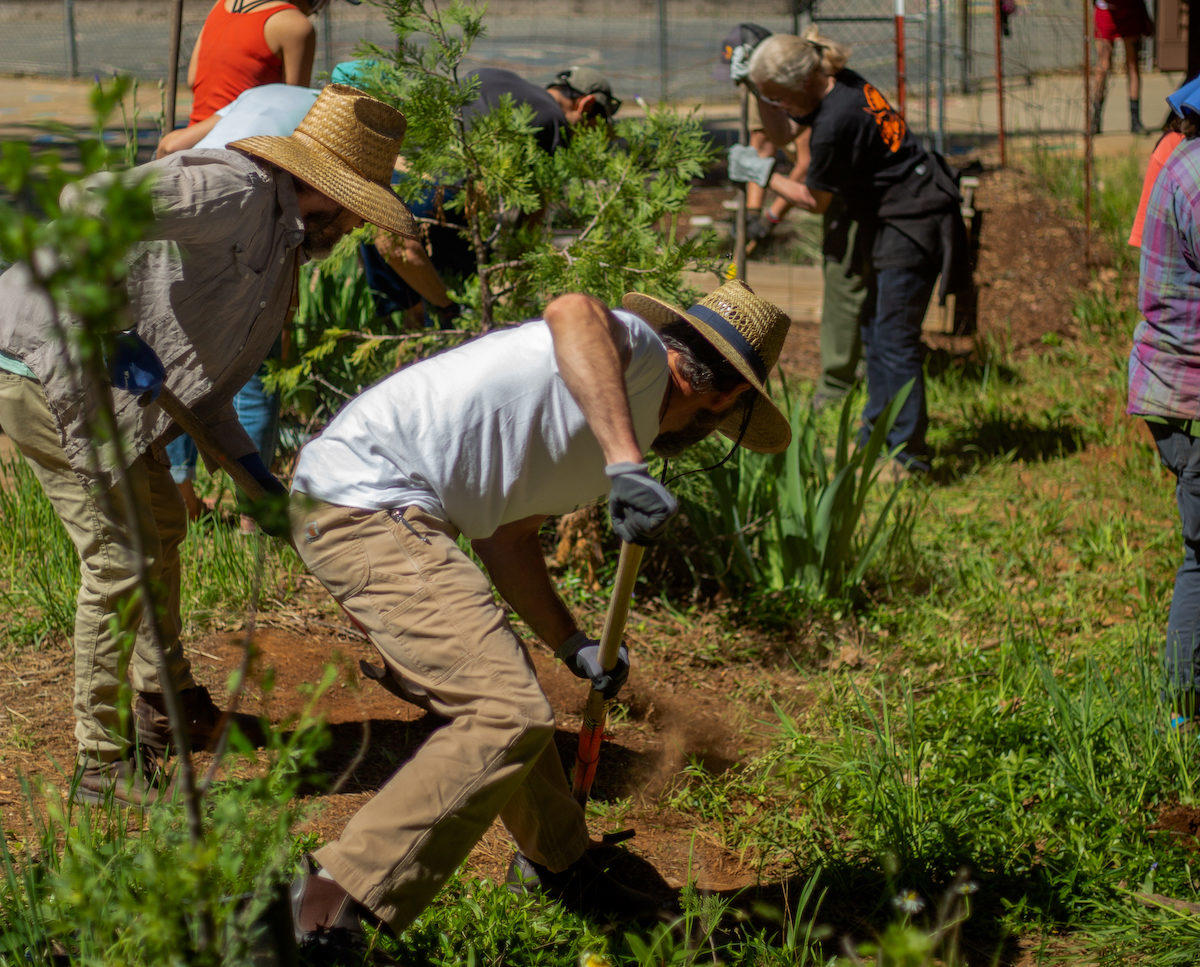
TYPES OF HUBS
The NorCal Resilience Network is basing our approach designed by the Urban Sustainability Directors Network to support facilities and community members both in times of disaster and during times of normalcy.
“Resilience Hubs provide an opportunity to effectively work at the nexus of community resilience, emergency management, climate change mitigation, and social equity while providing opportunities for communities to become more self-determining, socially connected, and successful before, during, and after disruptions.”
Kristin Baja, Urban Sustainability Directors Network
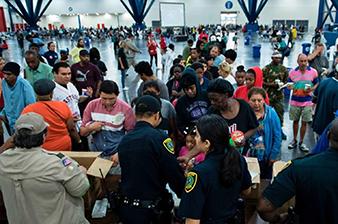
RESILIENCE HUBS
Resilience Hubs are community-serving facilities augmented to support residents, coordinate communication, distribute resources, and reduce carbon pollution while enhancing quality of life year-round. Hubs can meet a myriad of physical and social goals by utilizing a trusted physical space such as a community center, recreation facility, or multi-family housing building as well as the surrounding infrastructure such as a vacant lot, community park, or local business. Resilience Hubs are focused on shifting power to the community and are intended to provide services and programming to communities year-round.
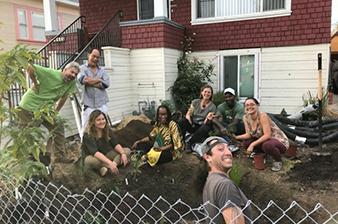
RESILIENCE SPACES
Resilient Spaces can include neighborhood and community spaces that are intended to enhance community resilience on a smaller scale and are often connected to a Resilience Hub. These can include community gardens and community-managed open spaces and can support community events, Resilience Villages, community-supported green infrastructure, tool-banks, or other similar infrastructure and programming that are intended to enhance community resilience. These can also be virtual spaces to gather, and to exchange information at a neighborhood level.
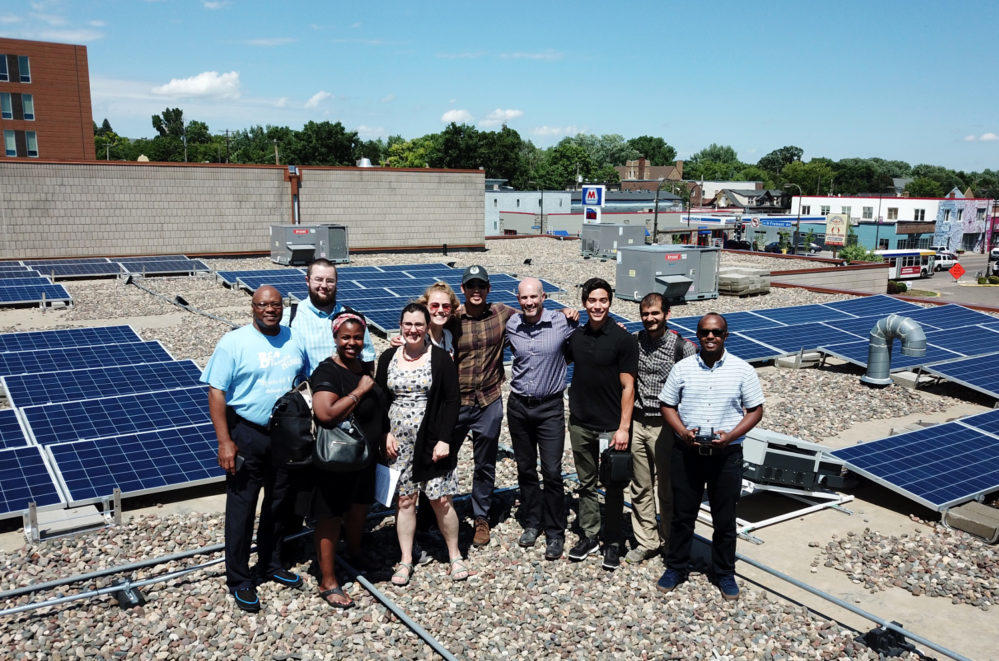
RESILIENT BLOCKS AND NEIGHBORHOODS
A Resilient Block brings together neighbors to build resilience and community. A Resilient Neighborhood is made up of multiple factors including resilient infrastructure, buildings, natural systems and public services. It is centered around “soft elements” such as community cohesiveness, connectivity, and collaborating across sectors to bring together Resilience Hubs, Resilient Spaces, Resilience Blocks and Resilient Power projects.
PROGRAM PILLARS
COMMUNITY PROGRAMMING
- Providing regular culturally appropropriate programming for community members, from workshops to gatherings
- Promoting resource sharing – from tools to cars
- Working with community members to organize resilience-building projects, from COVID-safe garden work days to disaster preparedness workshops
REGENERATIVE ECOLOGICAL FEATURES
- Save Water: greywater, rainwater catchment, drip irrigation
- Grow Food: Edible landscaping, from food forests to garden boxes
- Go toxin-free: no or low-VOC paints, green cleaning products
- Save Energy: double-pane windows, solar panels, bike riding, electric cars
DISASTER PREPAREDNESS & RESPONSE
- Backup power
- A robust supply of water, food and supplies on hand for earthquakes and other disasters
- An emergency plan for when a disaster does hit
- Carbon monoxide detectors, fire extinguishers, first aid kits and other products ready for use
RESOURCES
OUR 2021 PILOT LEADERSHIP TRAINING PROGRAM
The Resilience Hubs Leadership Training Program was an 8-month pilot program that introduced participants to the building blocks for becoming resilience hubs, spaces and blocks, through monthly zoom sessions and skill shares. The training worked with both community leaders from site-based organizations and government partners who are interested in supporting sites in their jurisdictions. You can read more about the training in our final report.
RESILIENCE HUBS AROUND NORTHERN CALIFORNIA

WEST OAKLAND RESILIENCY HUB
This project is adapting the West Oakland Senior Center, West Oakland Branch of the Oakland Public Library, and the DeFremery Recreation Center and Park – all of which are owned and operated by the City of Oakland – as a comprehensive resiliency hub. The project is being planned and implemented by the West Oakland Environmental Indicators Project.
THE RYSE CENTER
RYSE is a youth center born out of the organizing efforts of Richmond and West County young people who were determined to create safe spaces for themselves and their peers. The center hosts a variety of resilience-based programming and is installing solar with battery backup, in partnership with the Asian Pacific Environmental Network (APEN). As a completely youth-led and youth-designed project, the RYSE Center is a model for supporting youth-centered resilience hubs elsewhere.
CANTICLE FARM
Canticle Farm is an urban garden, educational center and community of intention, experimenting at the intersections of faith-based, social-justice-based, and Earth-based nonviolent activism. They live in six houses around a large garden in the Fruitvale District of Oakland, California.
Read more about this inspirational space on their website.
